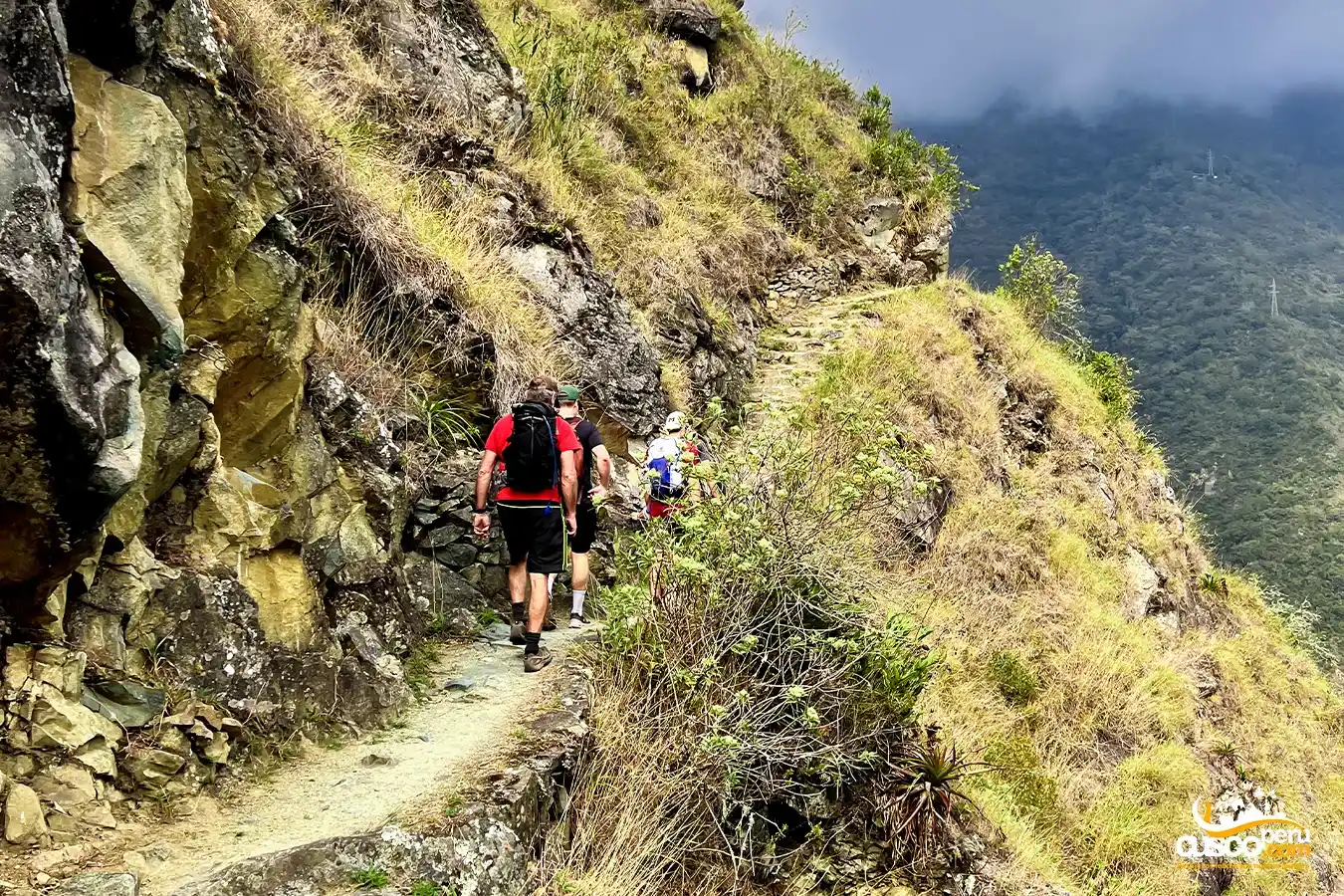
Many countries have hiking routes similar to the Inka Trail in Peru, yet few can match this journey where one encounters an ecosystem with a truly astonishing abundance of species and remnants of the Inca civilization scattered along the Machu Picchu route.
The dry season, from April to October, is the best time to hike the Inca Trail to Machu Picchu, as the weather is favorable, allowing clear views of the majestic valleys and mountains along the path without clouds or fog obstructing the view.
During the months of December, January, February, and March, rain is frequent and heavy in this part of Peru, while dense fog covers everything under its gray mantle.
In June, the festivities of the city of Cusco attract many domestic and foreign visitors eager to explore the land of the Incas, making it quite difficult to book entry during this month. Visitors often mention "Peru climbing Machu Picchu" as a highlight of their journey along the Machu Picchu hiking trail.
If you want to hike the Inca Trail to Machu Picchu in June or July, you should book an entry ticket at least twelve months in advance because of its high popularity. Inca Trail tickets for this incredible hike sell out months in advance.
For the Inca Trail in any other month of the year, it is usually necessary to book at least six months in advance.
The National Institute of Culture of Peru (INC) is the agency in charge of the care and conservation of this World Heritage site, as well as managing ticket sales. The INC has stipulated that 500 tickets be sold for the Inca Trail hike to Machu Picchu per day, distributed as follows:

It is important to note that the Inca Trail hike to Machu Picchu is closed in February each year for maintenance work across various sections of the route. These maintenance efforts aim to mitigate the significant impact of the massive influx of visitors on the integrity and beauty of this section.


According to the international classification of hiking difficulty levels, we have the following:
The Inca Trail hike to Machu Picchu is considered by travelers and experienced hikers to have a difficulty level of 3. This is because the route passes through various types of climates and different altitudes.
However, it is observed each year that among the travelers coming to Cusco to take on the Inca Trail hike to Machu Picchu, there are often children or older individuals with enviable physical conditions, meaning anyone can undertake this hike with the proper preparation and, above all, with a positive emotional state and a desire to enjoy the experience.
The maximum weight allowed for travelers during their journey on the Machu Picchu Inca Trail is 5 Kg. Considering this weight restriction, the following items should be considered for this route:

Boots are one of the most important elements to consider, as continuous use of feet is typical on a journey of this nature, and it's normal to experience some swelling or numbness by the second or third day.
It is highly recommended to wear mountain boots that are one size larger than usual, that are not new or have been moderately worn. Wearing new boots can cause scrapes on the ankles or heels, which would lead to significant discomfort during the hike.
Since 2000, the Peruvian government has mandated that entry to the Inca Trail route be done exclusively through a tour agency, so a traveler CANNOT undertake this route on their own.
The highest point of the Machu Picchu Inca Trail route is called 'Dead Woman's Pass' or Warmihuañuska in Quechua, located at 4,200 meters above sea level. It's good to know that the citadel of Machu Picchu, the end point of this unforgettable experience, is located at a much lower elevation (2,400 meters above sea level).
We must be honest about this, as there is a danger of falling off the mountain side. The entire Inca Trail is properly marked and tour guides and operators are primarily responsible for the safety of travelers during their journey, however, this does not guarantee that travelers always follow the instructions and in some cases accidents have occurred due to the recklessness of visitors.
It is important to consider that the physical condition of the traveler must be adequate, as well as having undergone two or three days of acclimatization in Cusco prior to the hike. A traveler unaccustomed to walking or physical exertion may find the Inca Trail route very difficult or even impossible.


Happy passengers